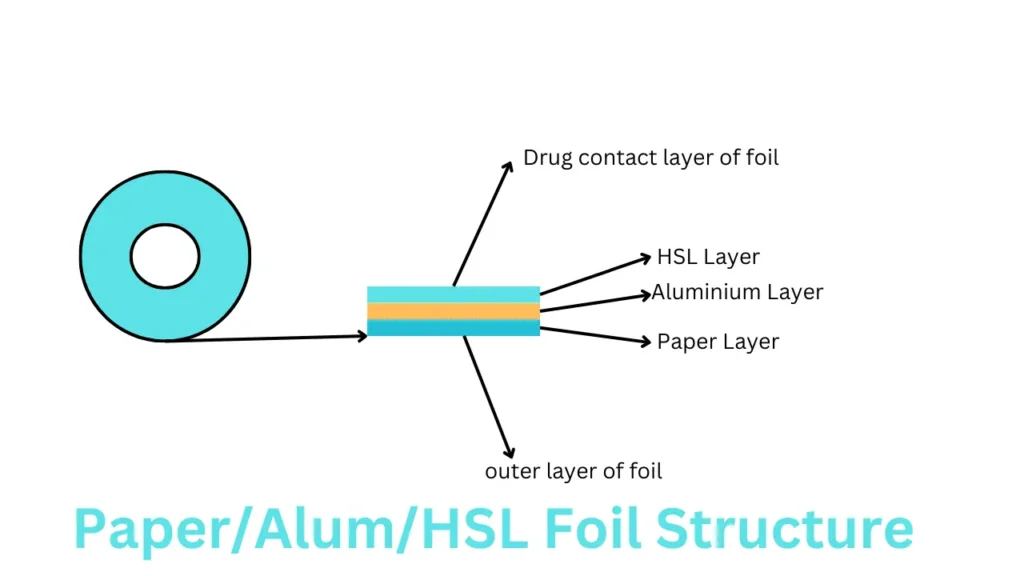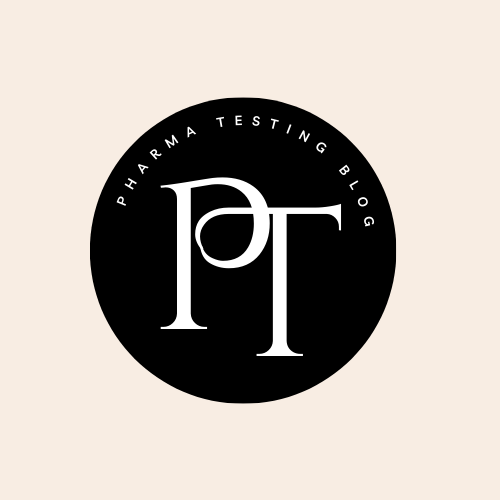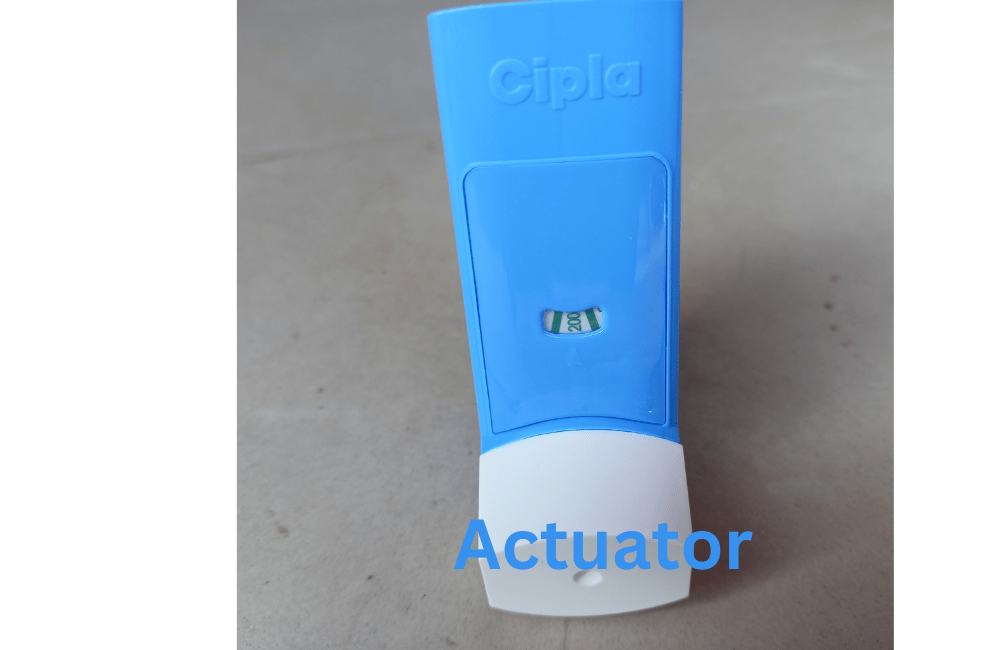The paper aluminium HSL coated foil structure is made from a thin layer aluminium layer combination with the paper on one side and another side coated with Heat seal lacquer. This foil is their layer component. Paper provides structure and printability, often used as an outer layer as an outer layer for labels or instructions. The aluminium layer is commonly used as a barrier layer in packaging to protect the contents from light, moisture, and air ensuring the product’s longevity. The HSL (Heat seal lacquer) layer is a type of coating applied to the aluminium layer which allows the materials to be Heat sealed to packaging materials ensuring a secure and tamper-evident closure.

This is multi-layered combining paper, aluminium, and a heat seal lacquer, this type of material is often used in blister packs for pills, sachets, or other forms of packaging where strong protection and a sealable barrier are required.
1. Description:
The aluminium foil is combined with one side of the paper and the other side is coated with heat seal lacquer. The foil is printed or unprinted foil.
2. Test matter:
The aluminium foil of the printed text matter matches the approved standard shade card, specimen, or artwork.
3. Color scheme:
The foil color scheme compares with the shade card or approved Pantone shade card.
4.Width:
The selected sample of foil measured the sample with the help of a measuring scale. Take the reading and note down the reading.
5.Inner core Diameter:
The selected sample of foil measured the sample with the help of a measuring scale. Take the reading and note it down. It ranges from 75 to 77 mm
6. Grammage:
Total Grammage:
The foil total Grammage testing cut the sample 10 x 10 cm or 5 x 5 cm with the help of a GSM plate, weighing the sample at analytical balance, and recording the reading weight.
Total Grammage = weight in gram x 100 or 400 (the sample 10 x 10 cm or 5 x 5 cm)
For the HSL Layer:
Take a sample of the total Grammage sample and completely dip the sample in a beaker containing the ethyl acetate. After some time rub the sample on the HSL Coated side and rub the cotton or clean cloth. After removing the HSL Layer, dry the sample at room temperature and take the weight.
Remaining sample Grammage = weight in grams x 100 or 400 = G
HSL Grammage = total Grammage – remaining sample Grammage
For the Aluminium layer:
Take the remaining sample of HSL Grammage and completely dip it in a glass beaker containing hot water. After 20-30 min the paper layer is separated from the aluminium layer. Dry the aluminum layer in a hot air oven at 750c for 2 min cool the sample and take the weight at analytical balance. Then calculate the given formula.
Grammage of aluminium layer = weight in grams x 100 or 400 (G1)
Grammage of paper layer= remaining sample Grammage – aluminium layer Grammage (G-G1)
7. Identification of Aluminium
This test is performe to identify aluminium by the chemical method. Take a sample of the Grammage of the aluminium layer. Take in a beaker mix 30ml 1NHCL then heat on a hot plate. the beaker aluminium foil to dissolve, in solution, add about 0.5 ml conc HCL and thioacetamide regents, no precipitate is formed, add dropwise NaoH solution and a gelatinous white precipitate is formed which dissolves on further addition of 1NaoH Solution after gradually addition ammonium hydroxide solution .gelatinous white precipitate is re-formed.
8. Identification by FTIR:
The drug contact layer is HSL (heat seal layer). The FTIR instrument identifies the identification test of the HSL layer. Take a sufficient sample and put it on the FTIR instrument. the reference standard is used in Zeon. The spectra were plotted between wavelengths 650-3800 cm-1. Both the sample and reference sample are compared.
The spectrum of the specimen exhibits major absorption bands only at the same wavelength as the spectrum of the HSL and reference standard
9. Thickness:
The selected foil sample measured the thickness with the help of a digital micrometer. Take the reading and note it down.
10.Pinhole:
The selected sample tested the pinhole of the foil with the help of an instrument pinhole tester. The sample was plotted on the back of the light background the light visually, the not observe the hole in the sample. If the sample has a hole light passed the light, it is easily verified in a pinhole. It test is important for foil in pharmaceutical finished product packaging.
I am Maneesh Maurya a professional pharmaceutical blogger from India having rich experience in the pharmaceutical Quality control field.




[…] paper/PE foil is made from the paper layer and laminated with the PE layer. This foil is made of multi-structure foil. Paper/PE foil is a […]
[…] All over the world, 80% of blister packaging. the PVC film is used in the pharmaceutical industry in blister packing. So PVC is mostly used in different roles because it is easily compactable, and easily coated with other products example-PE, PVDC, PAPER, And Aluminium. […]